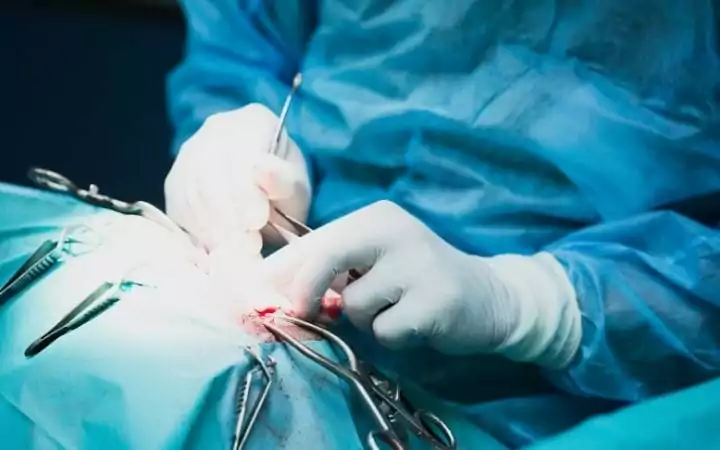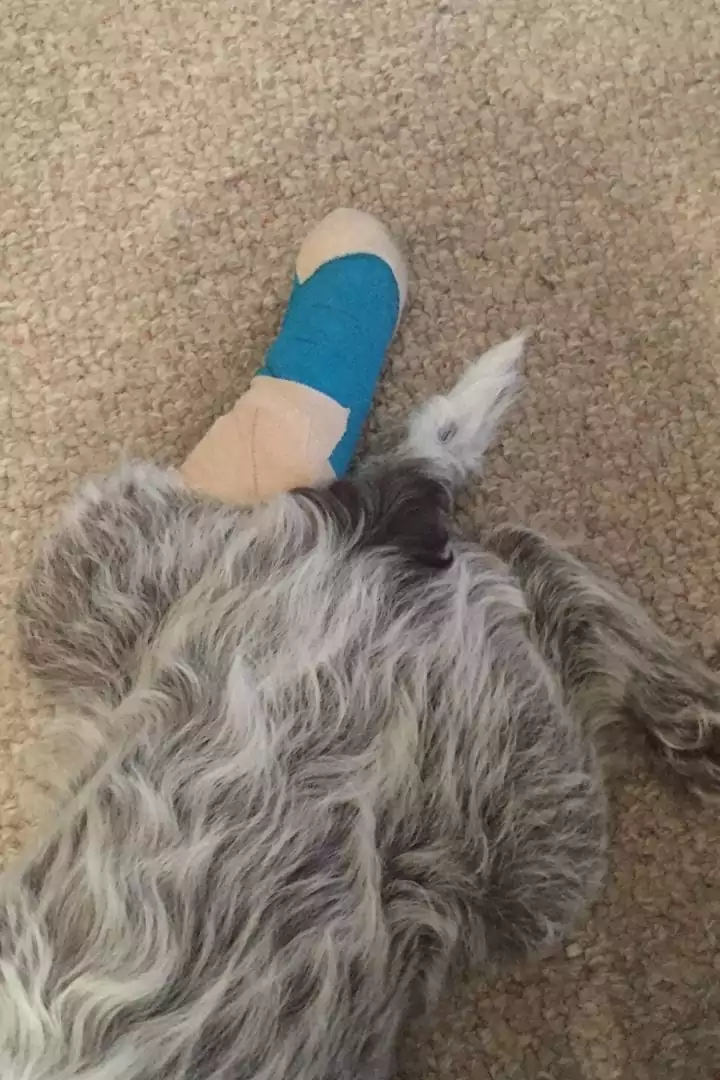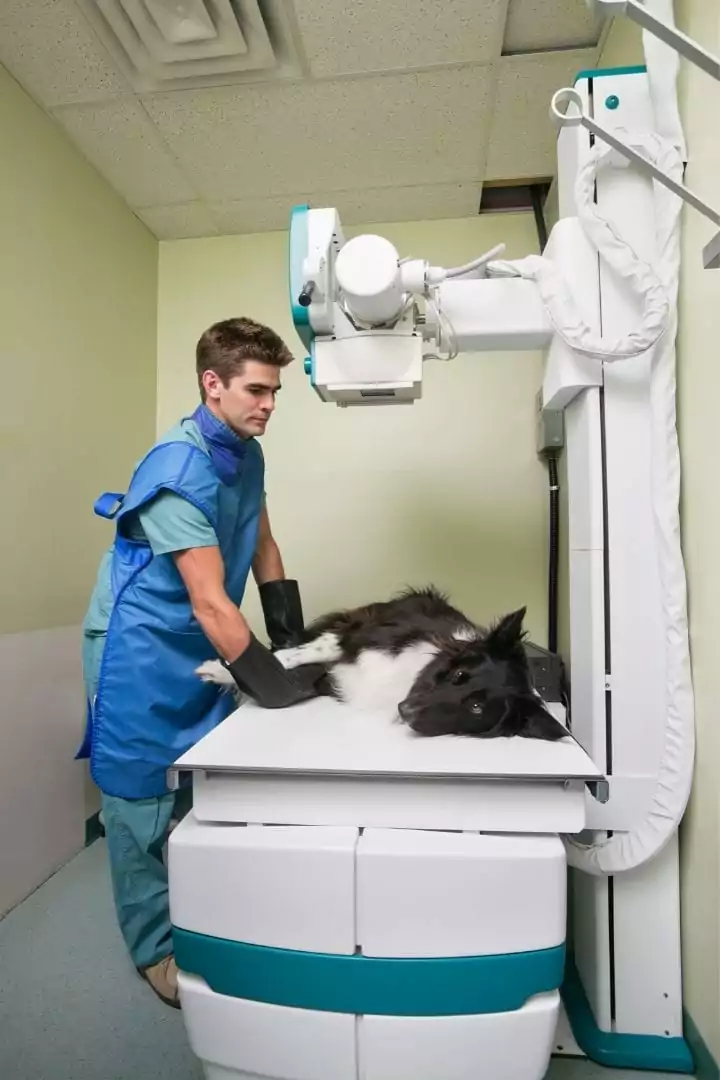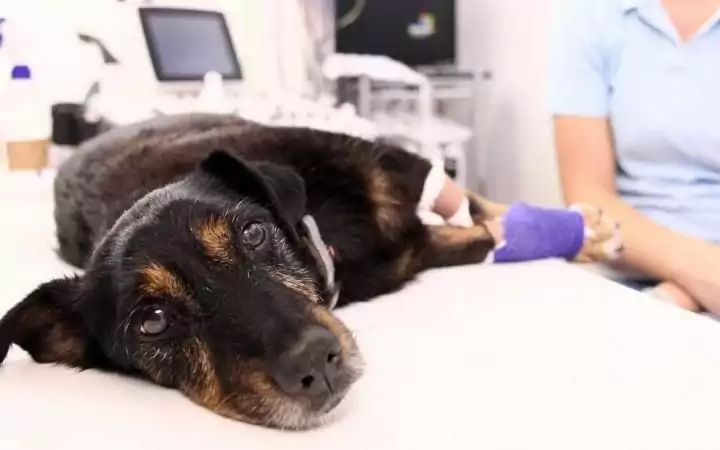Cranial crucial ligament rupture is one of the leading causes of hind lameness in dogs and the most common orthopedic problem seen in veterinary practices. You probably have heard of the anterior crucial ligament injuries in athletes, which is actually similar to cranial cruciate ligament rupture in dogs, but the causes and treatment vary.
If you have a canine friend that experienced a cranial cruciate ligament tear, your veterinary may have talked you through the different options and treatment. Some veterinary surgeons choose TPLO as their preferred method to treat the rupture.
In this informative article, we will cover everything you need to know about this procedure.
What is TPLO Surgery?
Before we define TPLO, it is essential to describe what it stands for:
T– Tibial: tibia, also known as the shinbone, is one of the lower leg bones, and its primary function is to distribute weight across the limb.
P– Plateau: in this case, it means the top of the bone.
L-Leveling and O-Osteotomy: Osteotomy means the surgical cutting of a bone. In this situation, osteotomy will allow leveling.
Now, let’s put it all together:
Tibial Plateau Leveling Osteotomy is a surgical procedure where the anatomy of the stifle joint (knee in humans) is changed by cutting at an angle of the top tibia and rotate it. The purpose of TPLO is to treat the instability in the stifle caused by cranial crucial ligament rupture in dogs.
Functions of the cranial cruciate ligament
The cranial cruciate ligament (CrCL) is a tissue that connects the femur to the tibia. The primary function of the CrCL is to support the stability of the stifle joint by:
- Stopping the tibia (shinbone) from sliding forward with respect to the femur.
- Preventing the stifle from hyperextending or over-rotating.
What is cranial cruciate ligament tear?
The prominent tibial plateau slope in dogs puts a lot of pressure on the cranial cruciate ligament to keep the femur and tibia aligned. When the ligament is torn, the dog’s knee becomes unstable. The tibia starts to shift forward in relation to the femur during weight-bearing, and it can be painful for your pooch.
CrCL disease can begin with a partial tear, which degenerates the cartilage and bones in the stifle resulting in osteoarthritis. This process leads to a complete and severe rupture if not treated.
The underlying causes and contributing factors of CrCL rupture may include:
- Long term degeneration
- Increase on tibial plateau slope. Most dogs with a CrCL injury will have an angle of 25 degrees in their tibial plateau.
- Genetics
- Breeds such as Labrador and Boxers are more prone to have a CrCL tear
- Obesity
- Injury
Diagnosing a cranial cruciate ligament rupture
If your canine companion is limping is crucial to see your veterinarian as it could be a sign of CrCL injury or another issue, such as hyp dyslexia.
Your veterinarian will perform a physical examination involving observation and tests like cranial drawer assessment and cranial tibial thrust test to diagnose a rupture of the cranial cruciate ligament in your pet.
X-rays are also an essential diagnosing tool for CrCL. Arthroscopy, a minimally invasive orthopedic surgery, is used to evaluate and confirm the rupture of the ligament.
What is the COST of TPLO surgery?
The cost of TPLO surgery varies in each country; it also depends on your veterinary surgeon and the breed of your dog. The average price of TPLO surgery for dogs in the US ranges from $3000 to $5500, and it usually includes pre-op tests, anesthesia, and monitoring of the patient, the surgical procedure and post-operative care. Additional therapies and rehabilitation may have an extra cost.
TPLO is a complex procedure that requires extensive training and mentoring. Only a qualified and professional veterinary surgeon with experience in orthopedic operations can perform this surgery.
The price of this procedure also relays on the special high-quality surgical instruments needed for the operation, such as suitable plating and screw instruments, a power drill, TPLO saw, saw blades, jigs, and the list goes on.
What does TPLO surgery involve?
Firstly, veterinary surgeons will take a radiograph (X-rays) of the stifle for preparation. They are done under anesthesia, as patient positioning is crucial for the quality of it. The radiographs will measure the angle of the tibial plateau slope and facilitate planning.
After the X-rays, the veterinary team will start by performing arthroscopy and remove any damaged cartilage. Then, the veterinary surgeon will cut the top of the tibia with a particular saw and rotate it to level it with the femur at an angle of 5 to 7 degrees. The new position of the shinbone is fixed with screws and plates.
The surgeon will take post-operative X-rays to make sure that the plates and screws are in place and to check the angle of the tibia.
Recovery after TPLO surgery
There is a high chance that patients can use the operated limb between 2-3 days after surgery. This is one of the reasons a lot of surgeons prefer TPLO to other procedures where the ligament is replaced.
After surgery, your veterinarian will prescribe pain management for your dog, give you a recovery protocol and schedule a recheck appointment to asses the healing process. You should monitor your pet, and ask for an Elizabeth collar if there is a chance that your dog will lick the wound.
Your veterinarian may advise confining your pet to a small room or crate to avoid jumping for a few days. Exercise must be restricted for at least a few weeks; the length depends on the case. When it is time to increase your dog’s physical activity slowly, it is recommendable to use a leash. Additional therapies may be suggested.
It is essential to follow the recovery instructions of your vet to avoid any complications.
Risks and complications after TPLO surgery in dogs
As with any other surgical procedure, there is a chance of complications, but the good news is that the risk is low.
If an infection in the surgical site occurs, antibiotics will be prescribed. Some rare risks are loose screw and meniscal injury after surgery.
Summary
TPLO is the most popular surgical management for large young breeds and active dogs who are suffering from cranial cruciate ligament rupture. One of the advantages of this procedure is that the success rate is 90 percent.
If your dog is diagnosed with CrCL, it is essential to talk with your vet about the different options based on your pet’s scenario.
It is always important to be aware of any signs of pain in your pets for early diagnosis and treatment. We created an infographic with some pain symptoms to guide you, check it out here!






